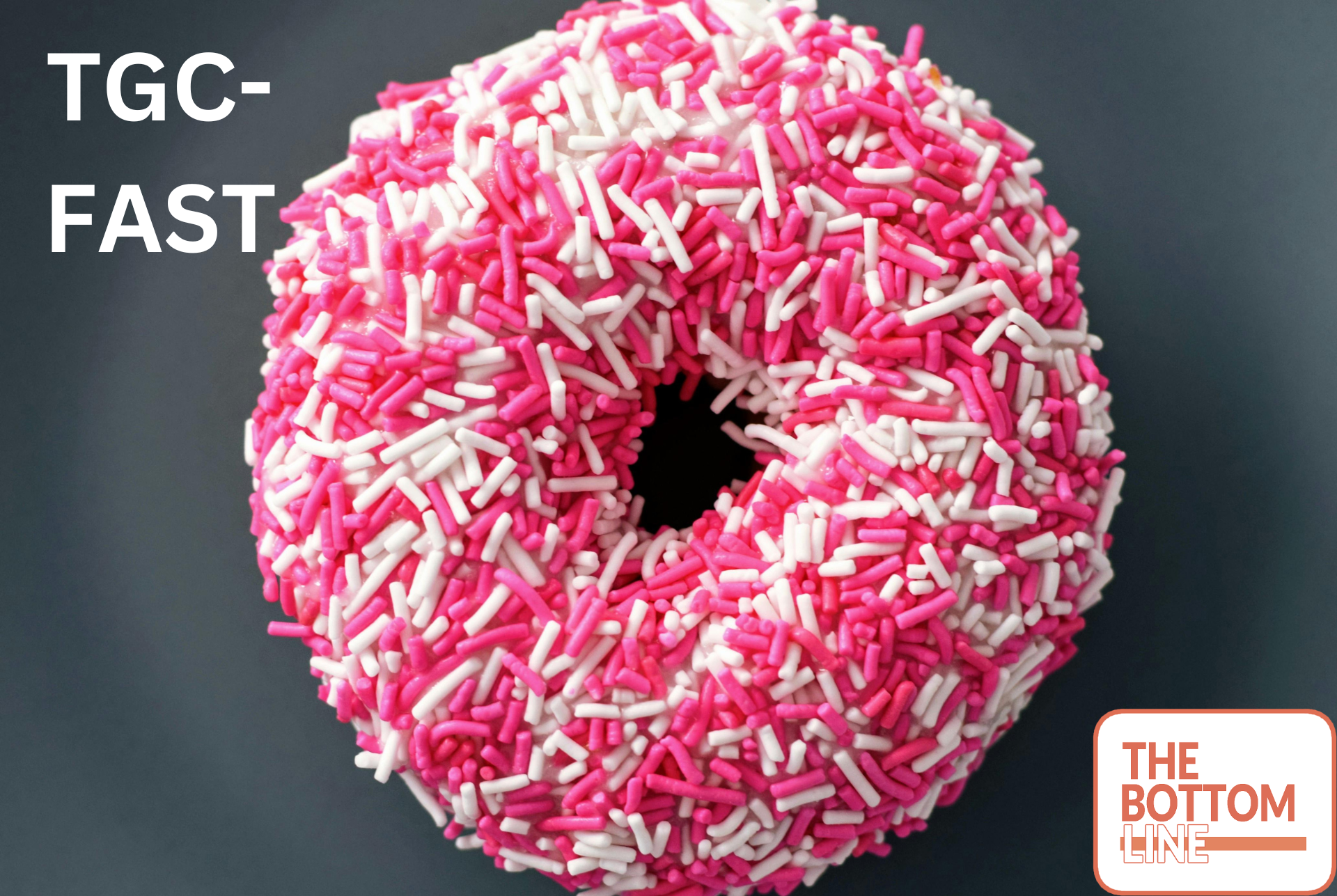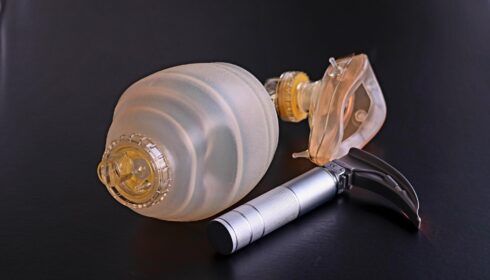TGC-Fast: Tight Blood-Glucose Control without Early Parenteral Nutrition in the ICU

Tight Blood-Glucose Control without Early Parenteral Nutrition in the ICU
Gunst et al. N Engl J Med 2023;389:1180-1190 DOI: 10.1056/NEJMoa2304855
Clinical Question
- In ICU patients not receiving early parenteral nutrition, does liberal glucose control (initiating insulin when blood glucose level [BGL] >11.9 mmol per liter [>215 mg per deciliter]) or tight glucose control (commencing insulin at BGL 4.4 to 6.1 mmol/L [80 to 110 mg/dL]) increase ICU length of stay or mortality at 90 days?
Background
- Optimal blood glucose targets in intensive care patients have been the subject of significant research attention
- Hyperglycaemia is associated with poor outcomes in a range of disease states
- Earlier trials suggested potential benefits of tight glucose control (TGC) in critically ill populations
- DIGAMI (1995) n=620, multicenter RCT in Sweden demonstrated a mortality benefit (1 year mortality; 18.6% vs 26.1%) in diabetic patients post myocardial infarction with insulin infusion followed by SC insulin with subsequent tighter glycemic control
- Van den Berghe et al. aka Leuven Surgical Trial (2001) n=1548 demonstrated a mortality benefit (4.6% mortality vs 8%) in surgical ICU patients at a single centre with intensive insulin therapy (BGL 4.5-6.5mmol/L) vs conventional therapy (BGL average 8mmol/L)
- Van den Berghe et al. aka Leuven Medical Trial (2006) n=1200 demonstrated a non-statistically significant trend towards reduced mortality and significantly reduced morbidity in a single medical ICU
- However, the landmark NICE-Sugar trial (2009), largely ended the practice of tight glycaemic control
- Multicentre, multinational RCT, n=6,104
- Conventional control (BGL <10mmol/L [180mg/dL]) vs intensive control (BGL 4.5-6.0mmol/L [81-108mg/dL])
- Statistically significant difference in 90-day mortality favouring conventional control (27.5% vs 24.9%, odds ratio 1.14 (95% CI 1.02-1.29; p=0.02)
- This may be mechanistically driven by higher rates of severe hypoglycaemia in the intensive control arm; 6.85% vs 0.5% in conventional-control arm
- Criticisms of NICE-SUGAR include
- Non-standardised BGL measurements and insulin titration may have increased risk of hypoglycaemia especially in intensive control group who received more insulin
- High rates of early TPN (as was guideline recommended practice at the time) may have increased insulin utilisation
- As such, contemporary guidelines (eg from American Diabetes Association) recommend targets around BGL 5.6–10.0 mmol/L [100–180 mg/dL] in ICU patients
Design
- Investigator -initiated prospective multicenter parallel group randomised controlled trial
- 1:1 randomisation in permuted blocks of 10 via centralised computer system, stratified according to center and diagnostic category
- Patients, families and outcome assessors blinded to treatment assignment
- Unblinded clinical staff
- All analyses performed by intention to treat analysis
- 9230 patients required to give 80% power to detect a 1 day difference in primary outcome and exclude a 1.5% increase in mortality with the intervention
Setting
- 11 ICUs at 3 hospitals in Belgium
- Recruitment from September 2018 to August 2022
- Brief pause in 2020 due to COVID-19 pandemic mandated by central ethics committee
- Closed COVID-19 units excluded from randomisation thereafter
Population
- Inclusion: All adults (≥18 years of age) admitted to participating ICUs
- Exclusion:
- Do not resuscitate order
- Moribund patients
- Orally fed – deemed not critically ill
- No arterial or central venous access present or planned
- Planned to receive TPN within 1 week of admission
- Previous inclusion in TGC-Fast or another trial
- DKA/HHS
- Inborn errors of metabolism
- Insulinoma
- Pregnant/lactating
- 24,195 assessed for eligibility
- 9230 randomised
- 4622 in liberal group
- 4608 in tight glucose control group
- 9230 randomised
- Pre-specified subgroups
- History of diabetes
- Cardiac surgery
- Non-cardiac surgery/trauma
- Neurologic/neurosurgical diagnosis
- Sepsis
- Predicted ICU length of stay >1 week
- Baseline characteristics well matched between liberal and tight group
- Median age 67 vs 67
- 63% male vs 64%
- 21% diabetes vs 20%
- Median APACHE II 21 vs 21 Comparing baseline characteristics of intervention vs. control group
Intervention
- Tight glucose control
- Targeted BGL 4.4-6.1mmol/L (80-110mg/dL)
- Guided by LOGIC-Insulin algorithm
- Computer based system used by nurses
- Advises insulin dosage, dextrose boluses if needed and timing of blood sampling (1-4 hours)
- Accounts for nutritional intake, use of drugs eg steroids and trends of BGL and insulin dose
- Can be overridden at clinician discretion
Control
- Liberal glucose control
- Insulin initiated if BGL >11.9mmol/L on 2 consecutive measurements (>215mg/dL) then targeted 10.0-11.9mmol/L (180-215mg/dL)
- Insulin infusion titrated by nursing staff without protocolised advice
Management common to both groups
- All blood glucose measured via blood gas analyser until arterial line removed
- All insulin administered as IV infusion via central line
- Enteral nutrition as soon as possible
- Parenteral nutrition initiated only after 1 week in ICU
- Intervention ceased when
- Oral diet commenced
- CVC removed
- Discharge from ICU
Outcome
- Primary outcome: ICU length of stay/time until readiness for ICU discharge
- No significant difference – hazard ratio for earlier discharge alive with tight glucose control, 1.00; (95% CI, 0.96 to 1.04; p=0.94)
- Primary safety outcome: 90-day mortality
- No significant difference Liberal 10.1% vs tight 10.5% Relative Risk 1.04 (95% CI 0.92-1.17 p=0.51)
- Separation between groups – intervention effect
- Patients in Tight control group
- Received more insulin (98.8% of patients vs 45.9%)
- Lower median
- Peak BGL: 170 vs 189mg/dL
- Morning BGL: 107 vs 140mg/dL
- Higher rate of severe hypoglycaemia 1.0% vs 0.7% in liberal group (RR 1.53, 95% CI 0.97-2.39)
- Patients in Tight control group
- Secondary outcomes: all pre-specified
- Comparing liberal vs. tight glucose control groups
- No significant difference in
- Bilirubin, AST or ALT levels
- New Infection
- Time to wean from mechanical ventilation
- Time to wean from haemodynamic support
- Time to discharge alive from hospital
- ICU or hospital mortality
- Significantly less in tight control group
- Severe acute kidney injury 8.6% vs 7.2% (RR 0.84, 95% CI 0.73-0.97)
- New renal replacement therapy 5.8% vs 4.7% (RR 0.82, 95% CI 0.68-0.98)
- Peak GGT and ALP levels
- No significant difference in
- Comparing liberal vs. tight glucose control groups
- Subgroup analyses – all pre-specified as above
- No significant difference in time to discharge alive form ICU or death at 90 days for any pre-specified subgroup
- Non-statistically significant benefit for death at 90 days favouring tight glucose control in neuro/neurosurgical patients (OR 0.69 95% CI 0.46-1.02)
Authors’ Conclusions
- In critically ill patients who were not receiving early parenteral nutrition, hyperglycemia was less severe than that previously reported in patients receiving parenteral nutrition. Further lowering of blood-glucose levels into the normal fasting range, guided by a computer algorithm, avoided iatrogenic hypoglycemia without affecting the length of time that ICU care was needed or mortality
Strengths
- Large sample size, multicenter RCT
- Heterogenous sample reflects real-word ICU population
- LOGIC algorithm was effective in preventing high rates of severe hypoglycaemia seen in the tight glucose control groups in previous large RCTs
- This allows for examination of the effects of glucose targets without being confounded by adverse effects of hypoglyacemia
Weaknesses
- Median daily glucose in Tight Glucose Control arm was higher than the target
- Non-blinded trial although a blinded trial design would be far less feasible
- Sample recruited from a single country and only 3 centers
- No correction for multiplicity of secondary outcomes
- Findings of decreased renal failure and hepatic biomarker derangement in Tight Glucose Control group should be interpreted as hypothesis generating only
The Bottom Line
- TGC-Fast demonstrates the effective use of a computerised algorithm to achieve tight glucose control in critically ill patients without significant hypoglycaemia as seen in previous studies
- However, there is not a convincing signal of a clinical benefit to tight glucose control in these data and the TGC protocol would likely be associated with a higher clinical workload
- In the absence of evidence of clinical benefit of tight glucose control, I will continue to target blood glucose levels of <10mmol/L (180mg/dL) in critically ill adults with strict avoidance of hypoglycaemia in line with current guideline recommendations
External Links
- article Tight Blood-Glucose Control without Early Parenteral Nutrition in the ICU
- further reading A Patient-Level Meta-Analysis of Intensive Glucose Control in Critically Ill Adults
Metadata
Summary author: Daniel Chung
Summary date: 01/06/2025
Peer-review editor: David Slessor
Picture by: https://www.pexels.com/@punttim/



